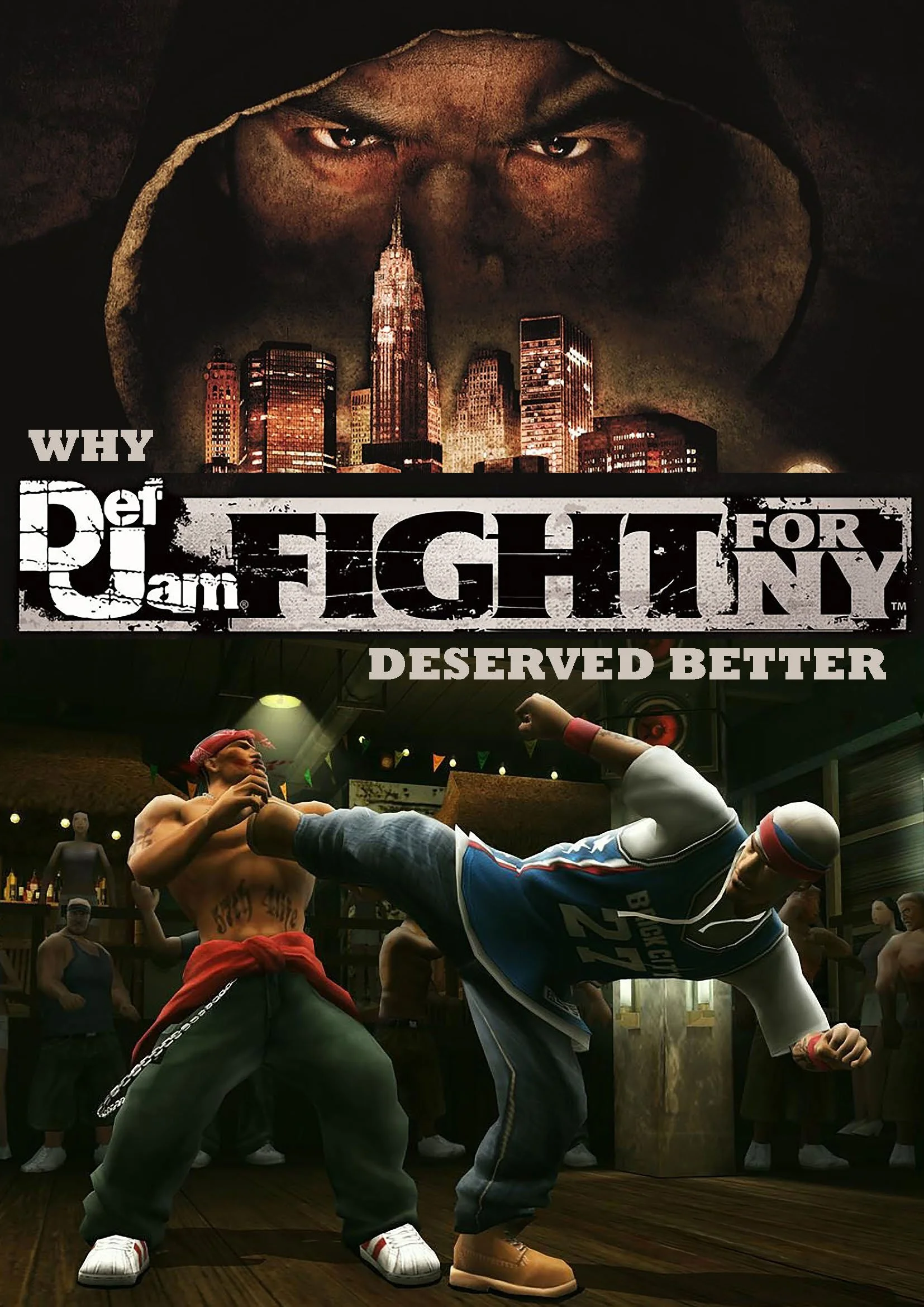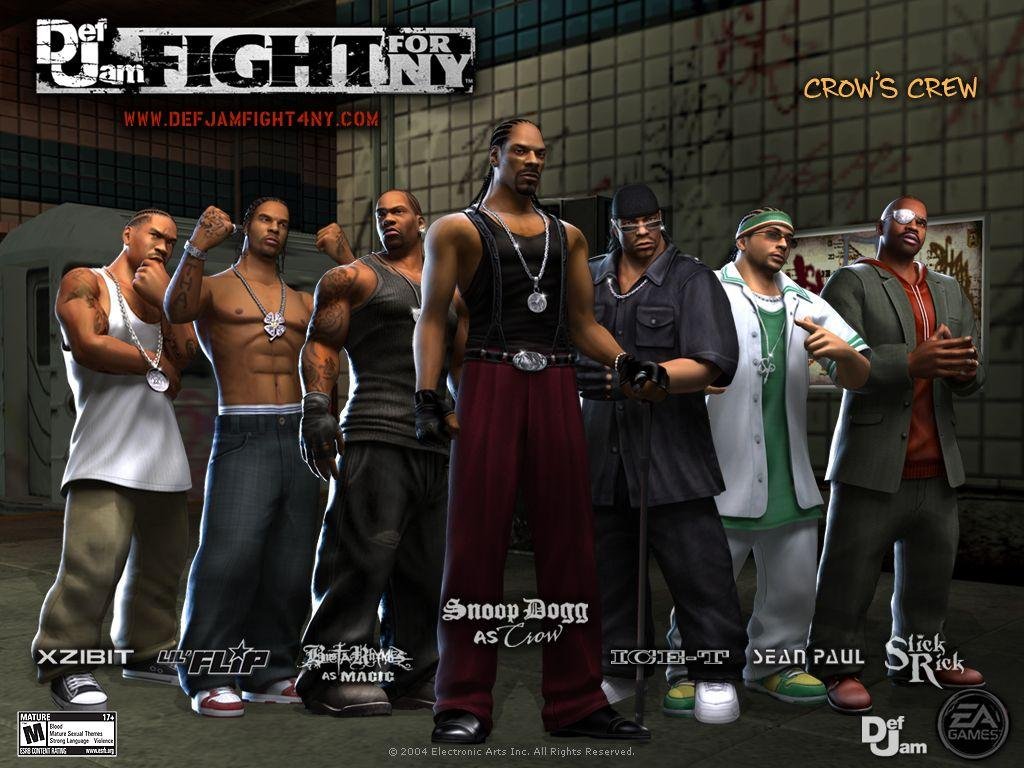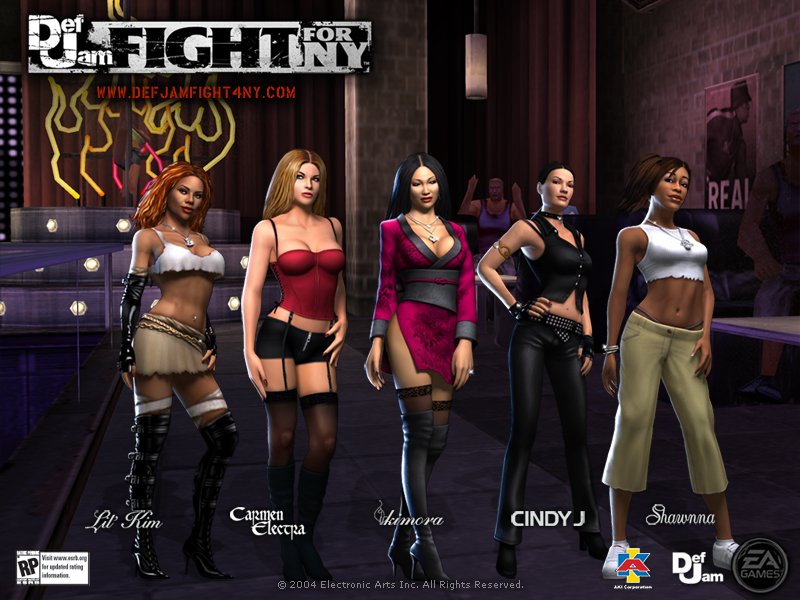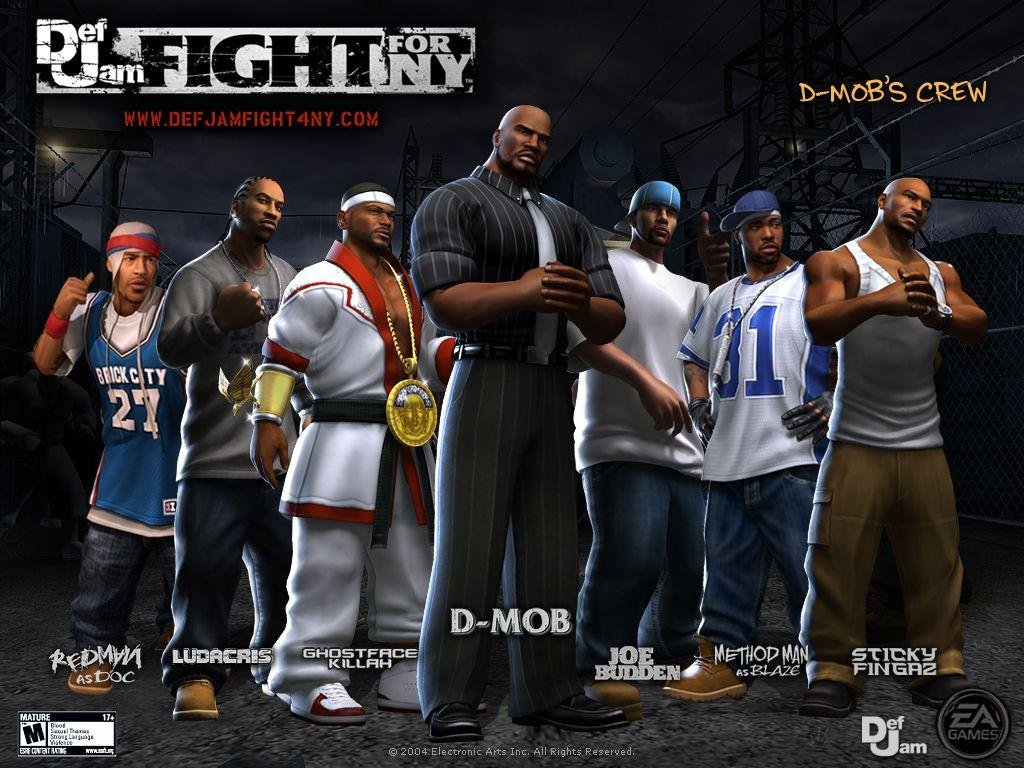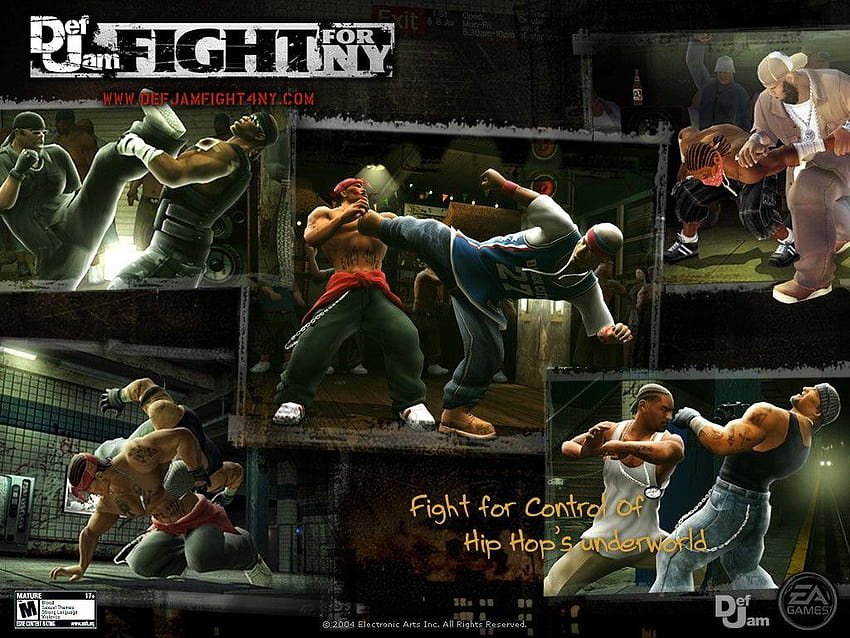Why 'Def Jam: Fight For NY' Deserved Better
Almost 20 years on, we're looking back on the cult classic rap brawler that set a bold new precedent for gaming and hip-hop, despite its elusive modern-day status.
A few months back, streetwear conglomerate Supreme announced its FW23 collection. Specifically in the t-shirt department, the brand paid homage to the PlayStation 2 classic Def Jam: Fight For NY with their 'Fighter' tee.
The tee sold out in seconds, featuring a hooded figure similar to the game's cover art, sparking discourse around the now cult classic video game. So, in honour of the renewed interest in this Electronic Arts fighting-rap fusion—let's take a trip down memory lane. Grab a snack or two, some AV cables and join us for our retrospective on Def Jam: Fight For NY.
In the late 1990s, hip-hop culture was big business. Rap arguably had reached its commercial apex in terms of physical sales—with rappers and hip-hop alumni branching out into new endeavours. We had movies from the likes of Master P and the No Limit crew and food endorsements from entities like Rap Snacks, to name a few.
On the video game front, the late '90s was a beautiful time. The immersive and worldly Final Fantasy series, the platforming masterclass Super Mario 64 and the narrative and espionage-draped Metal Gear Solid had teenagers and young adults hooked. But for hip-hop and video games? That was a slightly more challenging question.
In 1994, we had NBA star-turned-rapper-turned-funny guy Shaquille O'Neal's Shaq Fu—a charming yet, run-of-the-mill 2D beat 'em up for the Sega Genesis, Amiga, Game Gear, Super Nintendo Entertainment System and the original Game Boy.
Surprisingly, the worlds of hip-hop and video games were not yet in sync. Instead, they were subtle reskins of existing game mechanics with a hip-hop-coated PR spin. Arguably, the same could be said about Wu-Tang Clan's 1999 PlayStation game Shaolin Style—a retooling of the infamous unreleased 1998 Thrill Kill game.
The first proper hip-hop video game made for the love of the musical lore, rather than a large payout was Def Jam: Vendetta. When protagonist D-Mob and DMX made their names known in the 2003 PS2 and GameCube title—audiences took notice. With critical acclaim, couch co-op play and a rocking wrestling narrative, it was only a matter of time until EA commissioned a sequel to Vendetta.
“Name another game where you can fly-kick Ludacris in the face. We’ll wait…”
Def Jam: Fight For NY was released on September 21, 2004, stateside for the PS2, Xbox, GameCube, and later the PSP, under The Takeover subtitle in the autumn of 2006. The game expanded on the wrestling roots found in Vendetta, now offering fighters the choice of one, two, or three fighting styles: kickboxing, street fighting, martial arts, wrestling, and submissions.
For the playable roster, there are 67 characters—including but not limited to Memphis Bleek, Busta Rhymes, Snoop Dogg, Lil' Kim, Method Man, Slick Rick, Lil Flip, Omar Epps, Joe Budden, Scarface, Ghostface Killah, Redman, Fat Joe, Mobb Deep, Ice-T, Xzibit, Capone-N-Noreaga, Kimora Lee, Bubba Sparxxx and Sean Paul. To this day, few fighting games come as close as Fight For NY did with its expansive roster.
Narratively, the game's story mode revolves around a player-created fighter who competes in New York's fighting underground. Winning matches earn cash and XP, which can be spent on clothes from famous lines like Rocawear, Reebok, Phat Farm, Sean John, and many more.
It doesn't stop there: Def Jam: Fight For NY is the ultimate Y2K power fantasy: letting players indulge in haircuts, gaudy-yet-charming tattoos and even visit real-life gem merchant Jacob "The Jeweler" Arabo.
Development points can be used at the gym run by Henry Rollins to improve the character's skills. Victories against opponents unlock defeated fighters. Their signature Blazin' attacks and their jewellery are up for grabs.
The gameplay revolves around using the game's surroundings to one's advantage during combat. For instance, players can deal significant damage to their opponents by slamming them against barriers, using blunt objects such as walls, ramming doors or gates into their faces, or even throwing glass bottles.
If anyone's familiar with the game—war-like flashbacks of their bout with Fat Joe may come to mind. "The overall focus of the fighting system is fun, over-the-top action rather than a simulation of technical fighting," said Game Producer at EA Canada, Josh Holmes.
Thanks to tedious corporate red tape, licensed music, celebrity likenesses and real-world brands, a re-release or remaster of Def Jam: Fight For NY is sadly unlikely. Despite many barriers to entry for modern gamers, with the title being trapped on ageing hardware, and two ill-fated sequels [2007's Def Jam: Icon, a direct sequel to Fight For NY and 2010's karaoke spin-off Def Jam: Rapstar], the game's legacy and longevity cannot be contested.
The immersive world-building from Vendetta (and later Fight For NY) can be seen in other sixth and seventh-generation gaming gems such as Grand Theft Auto IV, Marc Ecko's Getting Up, the original two Saints Row games, DJ Hero, and 50 Cent: Bulletproof—with their cartoonish, hip-hop-driven aesthetic.
If you've got a PS2, Xbox or GameCube kicking about, dust it off and boot up Def Jam: Fight For NY. You won't be disappointed. Name another game where you can fly-kick Ludacris in the face. We'll wait…
Def Jam: Fight For NY is available for purchase on eBay and Amazon.


